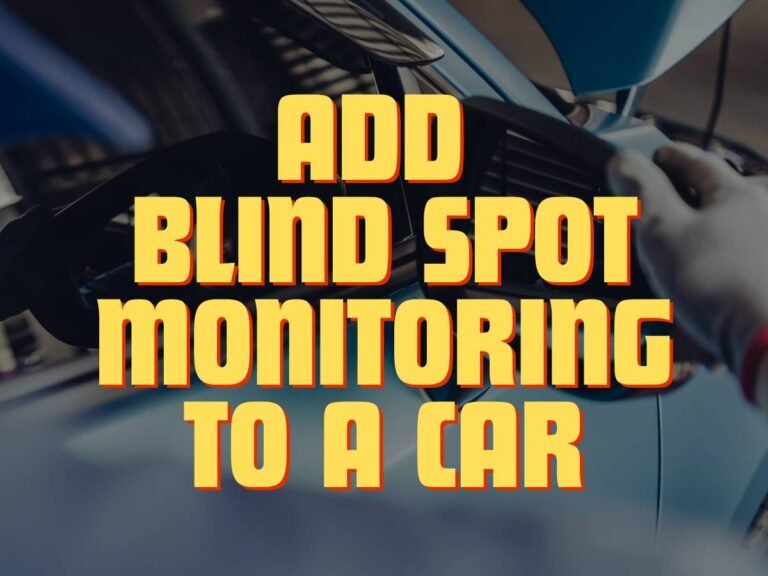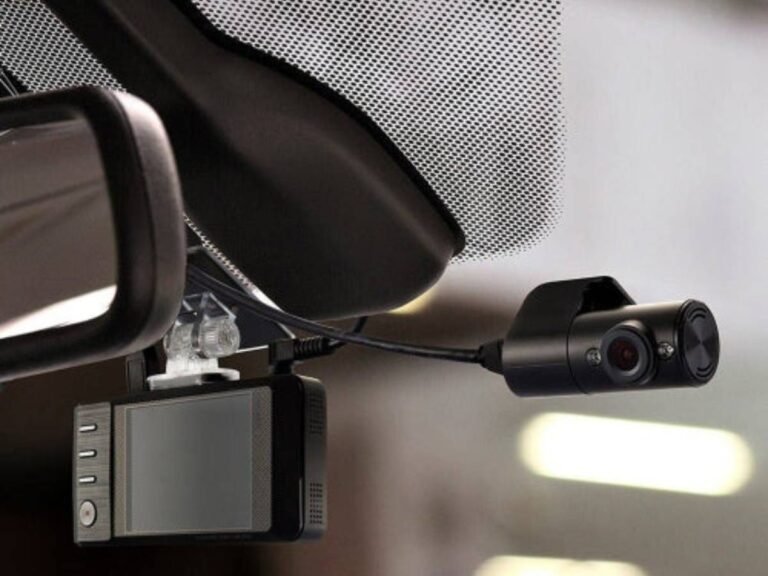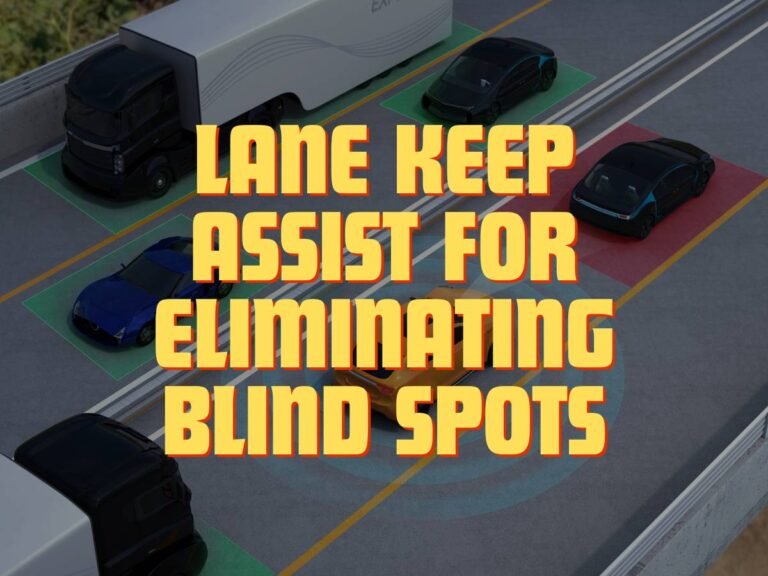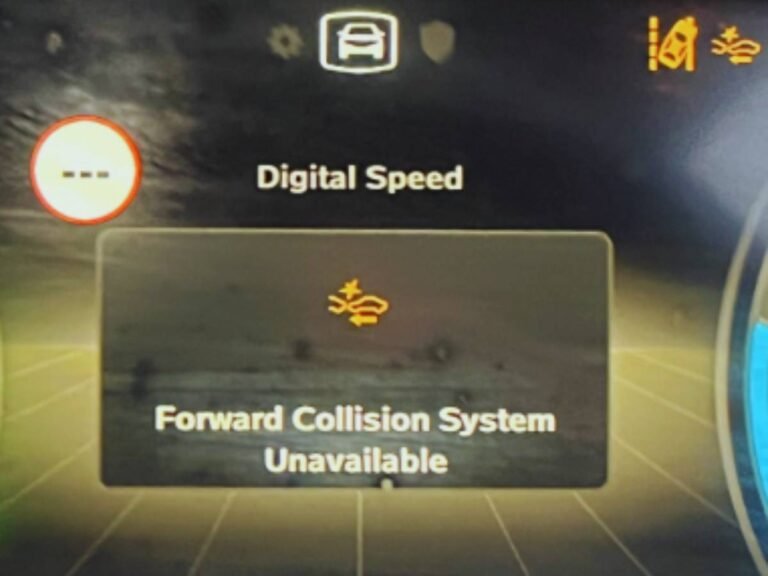Difference Between Lane Departure Warning And Lane Keep Assist
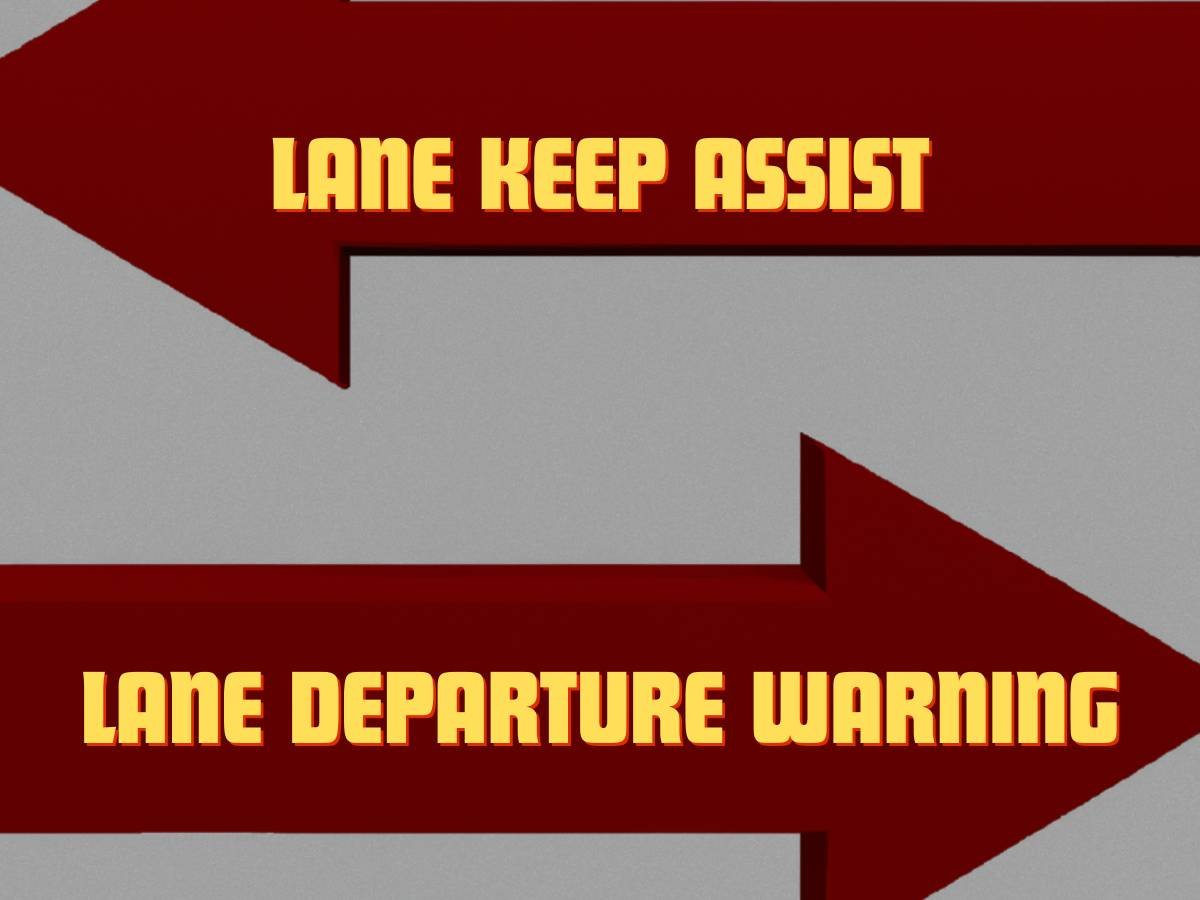
Cars have come a long way from being purely mechanical marvels of transportation. Today’s automobiles are increasingly sophisticated machines packed with cutting-edge technology designed to enhance every aspect of the driving experience, including safety. Two driver-assistance features that are gaining significant traction are Lane Departure Warning and Lane Keep Assist.
These systems work behind the scenes to help prevent you from unintentionally departing from your lane, a common occurrence that can lead to serious accidents, especially on highways at high speeds.
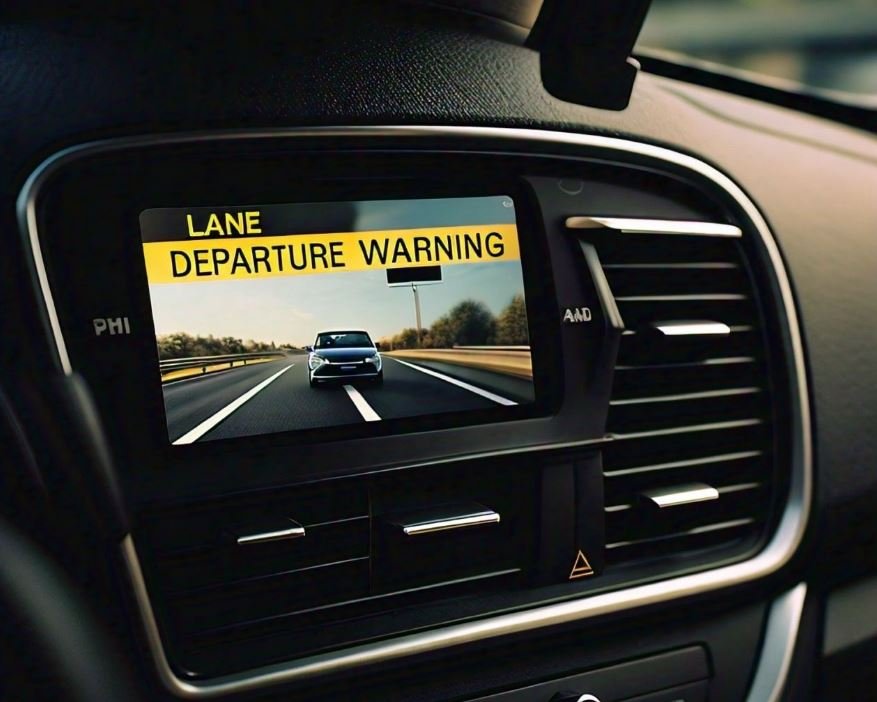
What is Lane Departure Warning?
Imagine you’re cruising down the highway, a little drowsy after a long lunch. Your eyelids might feel heavy, and your attention might start to wander. Lane Departure Warning (LDW) acts as your copilot in this scenario. Using a camera mounted on the windshield, LDW detects lane markings on the road. If you slowly ease out of your lane without signaling a turn, LDW will trigger an alert to get your attention back on the road. This alert can be a chime, a vibration in the steering wheel, or a visual cue on the dashboard, depending on the car’s make and model. The exact type of alert can be customized in some vehicles, allowing you to choose what you find most noticeable or least distracting.
LDW is a passive system, meaning it doesn’t take physical control of your vehicle. Instead, it acts as an attentive copilot, constantly monitoring your position within the lane. When it detects you’re unintentionally straying from your course, LDW triggers an alert to get your attention back on the road. This alert can be a chime, a vibration in the steering wheel, or a visual cue on the dashboard, depending on the car’s make and model. The goal is to give you a timely warning so you can react and safely steer your car back into position.
Here’s an analogy: Imagine you’re walking down a busy sidewalk and starting to drift toward the curb. A friend might nudge you gently to bring you back on track. LDW functions similarly, providing a subtle alert to help you course-correct before it’s too late.
Key Features of Lane Departure Warning:
- Alerts drivers when the vehicle drifts out of its lane
- Relies on sensors to monitor lane position
- Provides visual, auditory, or haptic warnings
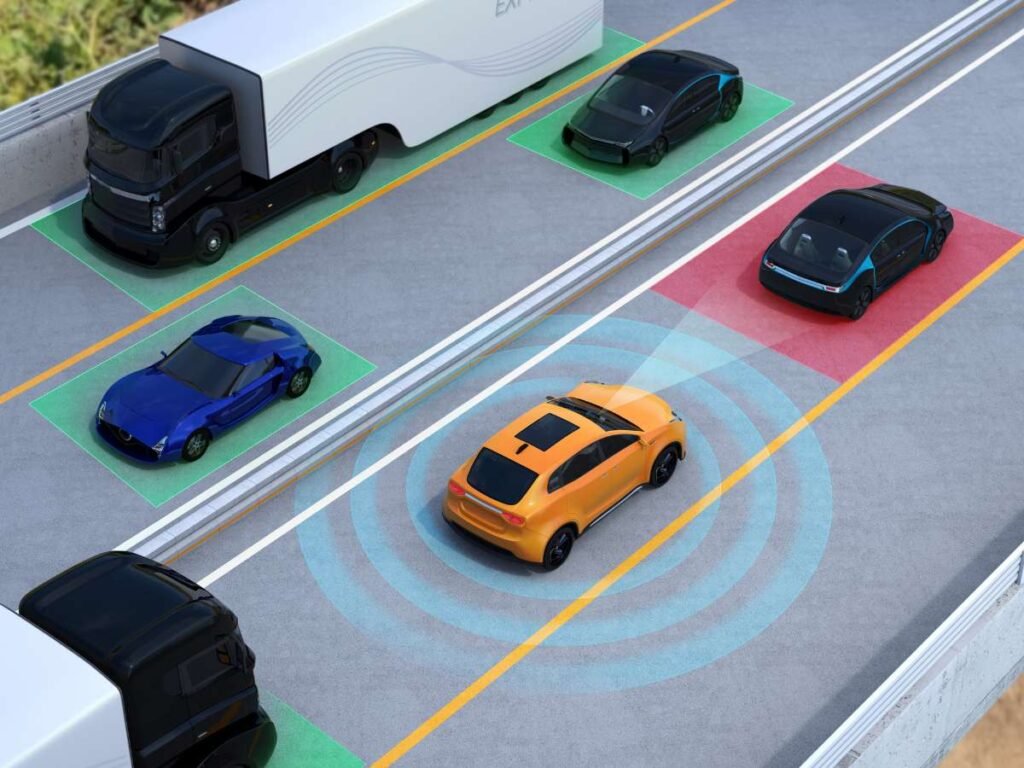
What Is Lane Keep Assist?
Lane Keep Assist (LKA) builds upon LDW’s functionality. It uses the same camera technology to track lane markings. But here’s where things get interesting: LKA is an active system. If LKA detects you drifting from your lane and you haven’t signaled a turn, it will gently apply steering torque to guide your car back into the center.
This isn’t autopilot; the system provides subtle assistance, not complete control. You’ll still feel the car’s response through the steering wheel, and it’s important to maintain a grip on the wheel at all times. LKA is designed to be a helping hand, not a substitute for safe driving practices. Think of LKA as an extra set of eyes on the road. It can detect lane departures that you might miss, especially during long drives or moments of fatigue. The system can also be helpful in situations where lane markings are faded or unclear.
However, it’s important to remember that LKA is not a fail-safe. It may not function properly in all conditions, such as on roads with wide lanes or irregular lane markings. Additionally, LKA is typically designed to disengage at lower speeds, as it’s not intended for use in stop-and-go traffic.
Key Features of Lane Kep Assist:
- Actively intervenes to keep the vehicle within its lane
- Utilizes sensors to detect lane markings
- Applies corrective steering inputs to prevent lane departure
What Lane Keep Assist is also known as?
Car manufacturing companies use various names for their lane-keeping systems, depending on their branding and marketing strategies. Some common terms used for lane-keeping systems by different manufacturers include:
- Lane Keeping Assist (LKA): This term is widely used by many manufacturers, including Honda, Hyundai, and Kia.
- Lane-Keeping System (LKS): Ford commonly refers to its lane-keeping technology as the Lane-Keeping System.
- Lane Assist: Volkswagen uses the term Lane Assist for its lane-keeping feature.
- Lane Departure Warning (LDW) with Lane Keep Assist: Some manufacturers, like Acura, combine lane departure warnings with lane-keeping assists under one system.
- LaneSense Lane Departure Warning with Lane Keep Assist: Chrysler uses this term for its lane-keeping system.
- Lane Follow Assist (LFA): Lexus employs this term for its lane-keeping technology.
- Lane Centering Assist: Nissan refers to its system as ProPILOT Assist with lane centering.
- Active Lane-Keeping Assist: Mercedes-Benz uses this term for its lane-keeping feature.
- Steering Assist: BMW refers to its lane-keeping system as Steering Assist, which assists in keeping the vehicle in the center of the lane.
- Lane Trace Assist (LTA): Toyota uses this term for its lane-keeping feature, which is part of its Toyota Safety Sense suite.
The Differences Between Lane Departure Warning and Lane Keep Assist
Here are some key differences in Lane departure warning Vs. Lane Assist:
1. Functionality:
- A lane departure warning alerts the driver when the vehicle drifts out of its lane.
- Lane assist actively intervenes to keep the vehicle within its lane by applying corrective steering inputs.
2. Level of Intervention:
- Lane departure warning provides warnings but does not actively steer the vehicle.
- Lane assist takes corrective action by automatically adjusting steering to keep the vehicle in its lane.
3. Safety Enhancement:
- Both systems contribute to improved safety on the road by reducing the risk of accidents caused by unintentional lane departures.
- Lane assist provides a higher level of safety by actively preventing lane departure rather than just warning the driver.
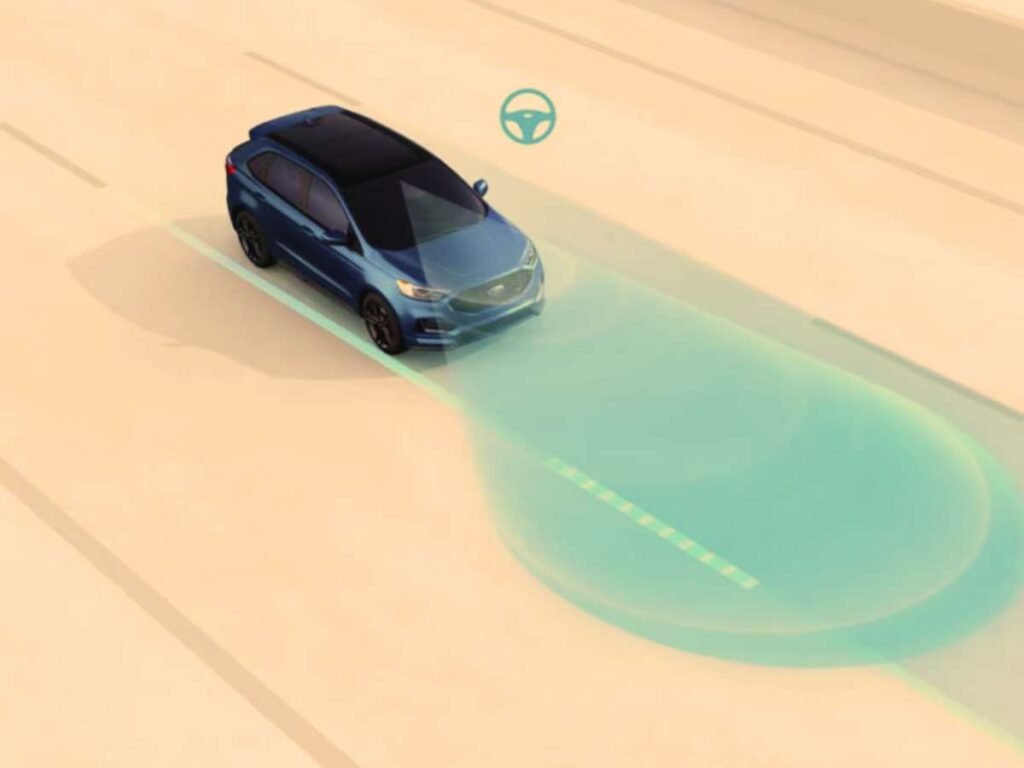
Lane Departure and Lane Assist: Working Together for Safety
Many cars offer both LDW and LKA as part of a driver-assistance package. These systems work together seamlessly to create a layered safety net. LDW acts as the first line of defense, providing a clear warning to alert you of an unintentional lane departure.
If you don’t react to the LDW alert, LKA then steps in to provide gentle steering assistance to nudge your car back into its lane. This coordinated approach can help prevent accidents arising from lane departures due to drowsiness, distraction, or even blind spots.
Here are some additional points to consider:
- Both LDW and LKA can be disabled by the driver, typically through a button on the dashboard or steering wheel.
- These systems may not work perfectly in all conditions, such as on poorly marked roads or during heavy rain or snow.
- Never rely solely on LDW or LKA to stay in your lane. Always be an attentive and responsible driver.
By understanding the differences between Lane Departure Warning and Lane Keep Assist, you can leverage these technologies to make your driving experience safer and more comfortable.
Should You Get Lane Departure Warning and Lane Keep Assist?
Whether Lane Departure Warning (LDW) and Lane Keep Assist (LKA) systems are worth it depends on your driving habits and priorities. Here’s a breakdown to help you decide:
Safety Benefits:
- Reduced Accident Risk: Studies show LDW and LKA can significantly reduce lane departure accidents, a common cause of highway crashes.
- Combat Drowsiness & Distraction: These systems act as a backup when fatigue or inattention cause you to drift from your lane.
Costs to Consider:
- Upfront Cost: Cars equipped with LDW and LKA may have a slightly higher price tag.
- Package Deals: These features often come bundled with other driver-assistance systems, which may not be of interest to everyone.
Usability:
- Not Foolproof: LDW and LKA have limitations, such as not working in all weather conditions or with unclear lane markings.
- Driver Engagement Still Crucial: These systems are for assistance, not replacement for safe driving practices. You should always stay alert and focused behind the wheel.
If safety is a top priority and you frequently drive long distances on highways, LDW and LKA can be valuable additions. However, if you primarily do city driving or prioritize a lower initial car cost, these features might not be essential.
Here are some additional factors to consider:
- Your commute: Do you drive long stretches on highways where fatigue can be a factor?
- Your budget: Are you comfortable with a slightly higher car cost for the added safety features?
- Your driving habits: How likely are you to get drowsy or distracted behind the wheel?
By weighing the safety benefits against the costs and limitations, you can decide if LDW and LKA are worth it for your driving needs.

How to check if your vehicle has a Lane Departure Warning installed?
Checking if your vehicle has a Lane Departure Warning (LDW) installed can vary depending on the make and model of the vehicle. Here are some general steps you can take to determine if your vehicle is equipped with LDW:
- Consult the Owner’s Manual: The owner’s manual is the first place to look for information about the vehicle’s features. It should provide details on the available safety systems, including the Lane Departure Warning.
- Look for LDW Indicator Lights: Start your vehicle and look at the instrument cluster for any indicator lights related to lane departure warning. These lights usually illuminate briefly when you turn on the ignition. They may appear as an icon depicting a vehicle drifting out of its lane or a similar symbol.
- Check the Vehicle’s Display Screen: Many modern vehicles have a central display screen where you can access various settings and information about the vehicle. Navigate through the menus to see if there’s an option for lane departure warning or lane assist. You may find settings to enable or disable the feature here.
- Inspect the Steering Wheel or Control Panel: Some vehicles have dedicated buttons or controls on the steering wheel or center console for activating or adjusting lane departure warning systems. Look for any buttons labeled “LDW,” “LDA,” “Lane Departure,” or similar.
- Visit the Manufacturer’s Website: If you’re still unsure, visit the manufacturer’s website and look up your vehicle’s specifications. The official website may provide detailed information about the features included in your vehicle’s trim level.
- Consult with a Dealer or Service Center: If you’re unable to find information through the methods above, you can contact your vehicle’s dealership or service center. They can access your vehicle’s VIN (Vehicle Identification Number) and provide you with information about its features.
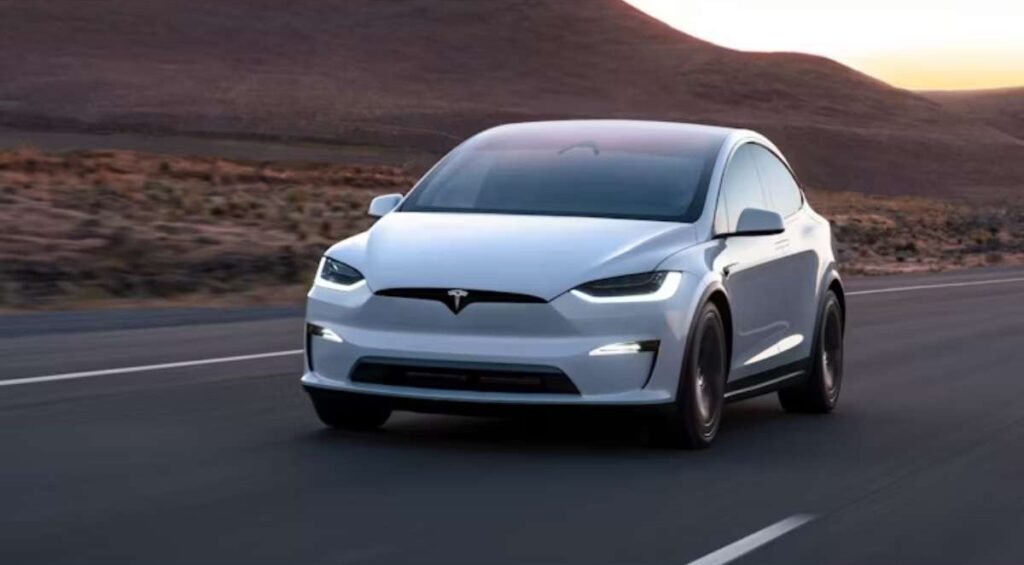
Cars that come with builtin Lane Departure Warning
Lane Departure Warning (LDW) is becoming an increasingly common feature in new cars. Here are some car manufacturers that offer LDW systems in many of their vehicles:
Lane Departure Warning (LDW) is becoming an increasingly common feature in new cars. Here are some car manufacturers that offer LDW systems in many of their vehicles:
- Audi
- BMW
- Honda
- Hyundai
- Kia
- Lexus
- Mercedes-Benz
- Nissan
- Subaru
- Toyota
- Tesla
- Volvo
It’s important to note that LDW may not be available on all trims or models from a particular manufacturer. Always check the list of the specific features for the car you’re interested in to confirm if it has LDW.
Cars that come with builtin Lane Keep Assist
Lane Keep Assist (LKA) is a more advanced feature than Lane Departure Warning (LDW) and is becoming increasingly available in newer car models. Here are some car manufacturers that offer Lane Keep Assist systems in many of their vehicles:
- Audi
- BMW (with Lane Change Assist on some models)
- Honda (as part of the Honda Sensing suite)
- Hyundai (part of Highway Drive Assist Package)
- Kia (included in Kia Drive Wise)
- Lexus (Lexus Safety System+ 2.0 package)
- Mercedes-Benz (Active Lane Keeping Assist)
- Nissan (included in ProPILOT Assist)
- Subaru (EyeSight system)
- Toyota (Toyota Safety Sense 2.0 package)
- Tesla (Autopilot system)
- Volvo (Pilot Assist system)
Remember:
- LKA is an assistance feature, not a replacement for safe driving.
- Functionality may vary by manufacturer and model.
- Always consult your owner’s manual for specific details about your car’s LKA system.
FAQs
What lane departure warning systems are designed to Do?
Lane departure warning systems are designed to alert you if your car starts to drift out of its lane unintentionally, typically by vibrating the steering wheel, sounding a chime, or displaying a visual warning on the dashboard. This helps prevent accidents caused by drowsiness, distraction, or even blind spots.
how does lane departure warning work?
Lane departure warning systems use a camera mounted on the windshield to track lane markings on the road. If you drift without signaling, the system detects it and triggers an alert to get you to focus and steer back into your lane.
how to turn off lane departure warning?
Turning off lane departure warning (LDW) varies by car manufacturer. It’s usually a button on the steering wheel or dashboard with a lane marking symbol and “OFF” or “disable” written nearby. Consult your car’s manual for the specific location and instructions.
how to turn off lane departure warning subaru?
In most Subaru models, you can turn off the Lane Departure Warning by finding the button with a car going slightly right and the word “OFF” near it. This button is usually located on the left side of the steering wheel or on the lower left instrument panel. Press and hold this button for about 2 seconds. You’ll likely hear a beep and see a warning light on your dashboard indicating that the Lane Departure Warning is disabled.
can you turn off lane departure warning Honda?
es, you can turn off lane departure warning (LDW) on a Honda. The method depends on your model, but it’s typically a button on the steering wheel with an image of lane markings and “LDW” or “main” written nearby. Check your Honda’s manual for the exact location and instructions.
can lane departure warning be added in a vehicle?
Adding lane departure warning (LDW) after purchasing a car is generally not recommended. LDW systems rely on cameras and other integrated components that might not be easily retrofitted. Consulting a certified mechanic about compatibility for your specific car is best, but aftermarket options are less common and may not be as reliable or effective as factory-installed systems.
Conclusion
While both lane departure warning and lane keep assist technologies aim to prevent unintended lane departures, they differ in functionality and level of intervention. Lane departure warning systems provide alerts to the driver, prompting them to take corrective action, whereas lane assist systems actively intervene by automatically adjusting steering to keep the vehicle within its lane.
Understanding these distinctions is crucial for drivers seeking to make informed decisions about vehicle safety features and for manufacturers aiming to implement the most suitable technologies in their vehicles. Ultimately, these advancements contribute to safer roads and a more secure driving experience for everyone.

